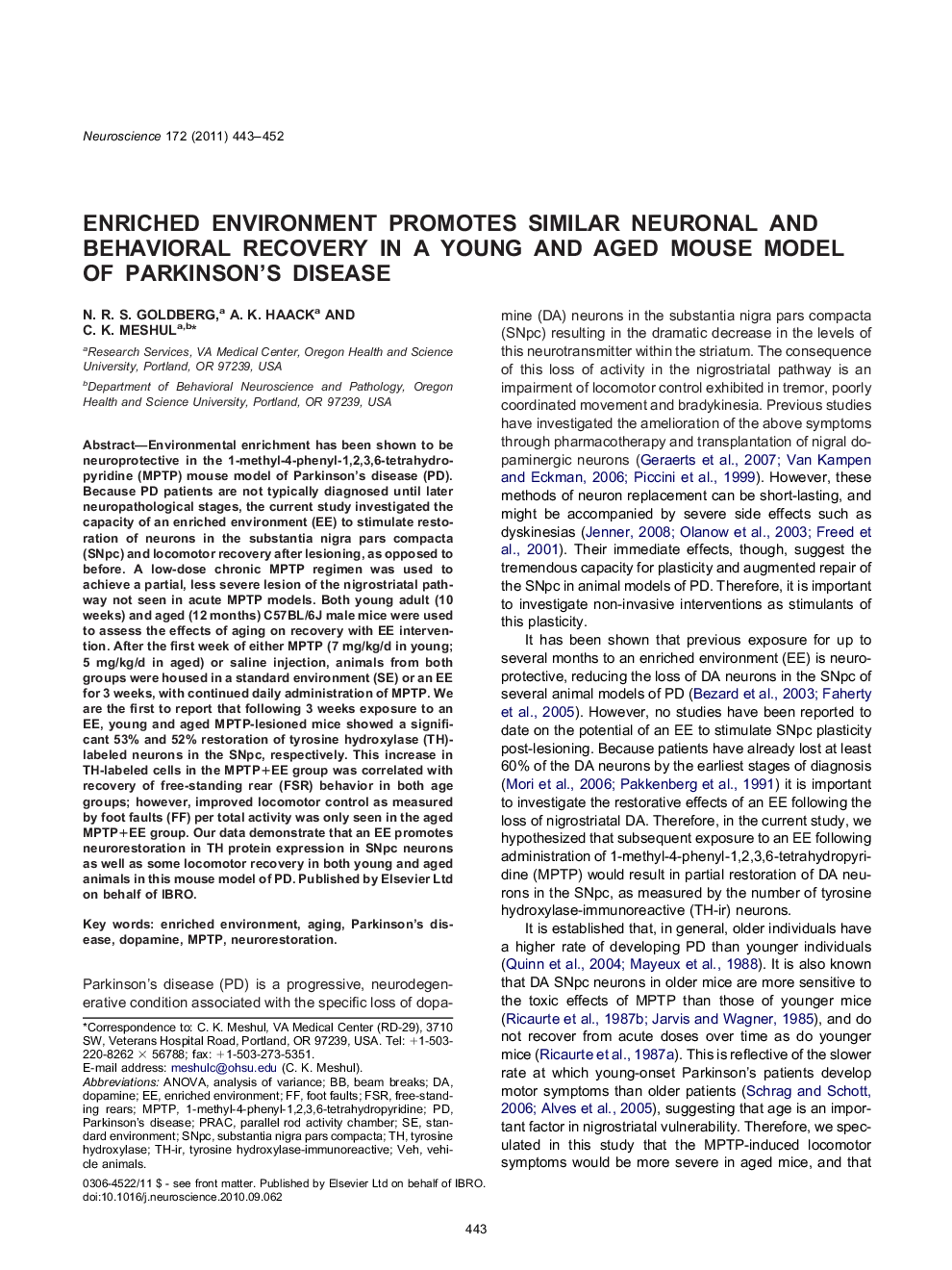| Article ID | Journal | Published Year | Pages | File Type |
|---|---|---|---|---|
| 4339062 | Neuroscience | 2011 | 10 Pages |
Environmental enrichment has been shown to be neuroprotective in the 1-methyl-4-phenyl-1,2,3,6-tetrahydropyridine (MPTP) mouse model of Parkinson's disease (PD). Because PD patients are not typically diagnosed until later neuropathological stages, the current study investigated the capacity of an enriched environment (EE) to stimulate restoration of neurons in the substantia nigra pars compacta (SNpc) and locomotor recovery after lesioning, as opposed to before. A low-dose chronic MPTP regimen was used to achieve a partial, less severe lesion of the nigrostriatal pathway not seen in acute MPTP models. Both young adult (10 weeks) and aged (12 months) C57BL/6J male mice were used to assess the effects of aging on recovery with EE intervention. After the first week of either MPTP (7 mg/kg/d in young; 5 mg/kg/d in aged) or saline injection, animals from both groups were housed in a standard environment (SE) or an EE for 3 weeks, with continued daily administration of MPTP. We are the first to report that following 3 weeks exposure to an EE, young and aged MPTP-lesioned mice showed a significant 53% and 52% restoration of tyrosine hydroxylase (TH)-labeled neurons in the SNpc, respectively. This increase in TH-labeled cells in the MPTP+EE group was correlated with recovery of free-standing rear (FSR) behavior in both age groups; however, improved locomotor control as measured by foot faults (FF) per total activity was only seen in the aged MPTP+EE group. Our data demonstrate that an EE promotes neurorestoration in TH protein expression in SNpc neurons as well as some locomotor recovery in both young and aged animals in this mouse model of PD.
Research Highlights▶Exposure to an EE promotes partial restoration of TH-labeled neurons following MPTP. ▶Aged mice show similar recovery to young adults following exposure to an EE. ▶EE results in increased free-standing rears in MPTP-lesioned young and aged mice. ▶EE results in decreased foot faults in MPTP-lesioned young adults.
